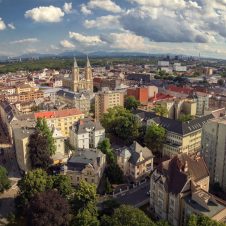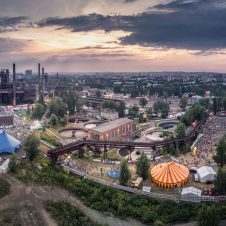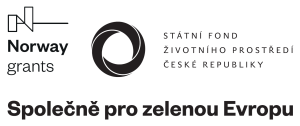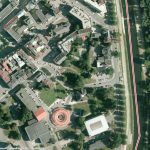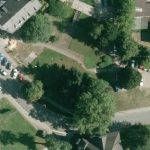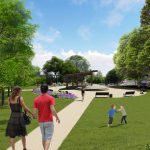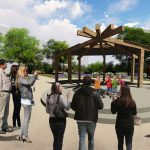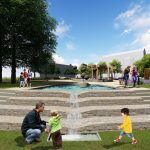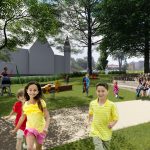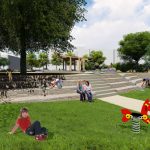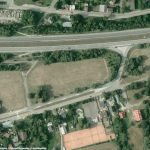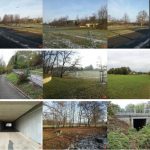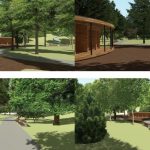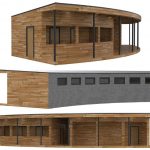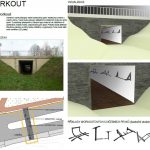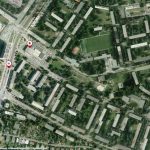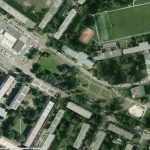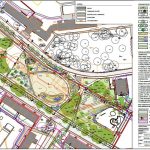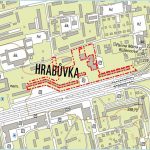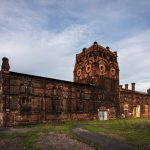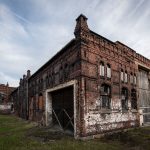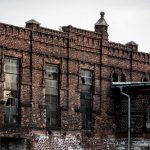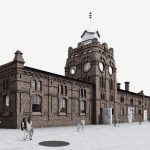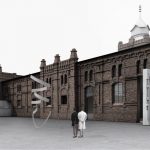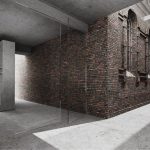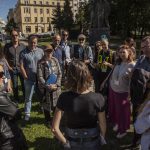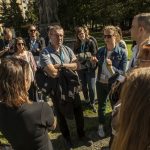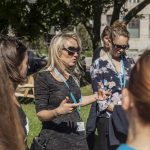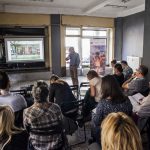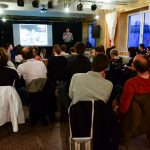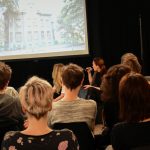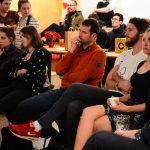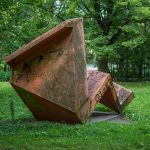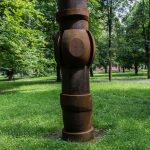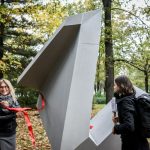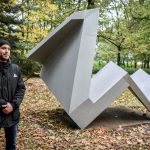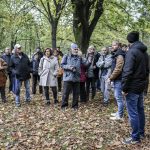Subcategory
Thematic articles
Science Faculty research project explores ways of revitalizing Ostrava’s slag-heaps
| 14. May 2019 Read ...Projects
-
REPLACE – Greenery instead of conctrete
-
Renovation of Za Biskupstvím Park
-
Renovation of U Boříka Park
-
Za Lunou Greenery
-
Savarin Greenery
-
Slaughterhouse complex reconstruction
-
Refill project
-
Public involvement projects
REPLACE – Greenery instead of conctrete

Ostrava has received almost 22.5 million CZK as an EEA/Norway grant for a project that will help alleviate the impacts of climate change in the Ostrava-Jih municipal district. The city has successfully applied for a “Bergen” grant to support the development of green-blue infrastructure and the implementation of measures facilitating adaptation to climate change. Thanks to the project, Ostrava will be better prepared to cope with extreme weather conditions, retain moisture in the urban landscape, and improve citizens’ overall quality of life.
What is the REPLACE project?
The REPLACE project (motto “Greenery instead of concrete”) will remove non-functional surfaced areas of ground (primarily concrete) in the Ostrava-Jih municipal district and replace these surfaces with greenery. The project will cover an area of almost 22 000 m², and it will target not only concrete surfaces, but also other fixtures in urban public spaces, such as sandboxes, carpet-beating racks, clothes-drying racks, benches and low walls. As part of the project, greenery will also be planted at the Dubina public transport terminal. The plantings will create 5 652 m² of beds for perennials and grasses, 524 shrubs and 4 329 m² of meadow-type areas with flowers.
Why Ostrava-Jih?
Ostrava-Jih, on the southern edge of the city, is one of Ostrava’s largest and most populous municipal districts (103 843 inhabitants). It is also the most densely built-up of the districts, with the worst access to public green areas and the largest area of non-permeable surfaces. All these factors mean that Ostrava-Jih is particularly vulnerable to extreme high temperatures during the summer months, and the high proportion of non-permeable surfaces prevents the retention of water in the soil during periods of rainfall. By removing these surfaces and increasing the proportion of green spaces in Ostrava-Jih, the REPLACE project will help more rainwater to be retained, as well as reducing ambient temperatures and volumes of dust, boosting biodiversity, and improving the quality of public spaces as a whole. The project will help Ostrava-Jih to move closer to nature and to become a better place to live – making this high-density residential area (and its public transport terminal) more pleasant, more functional, and safer for its inhabitants.
How much will it cost?
The project is being implemented as part of Ostrava’s Strategic Development Plan – specifically the priority area “A Healthy City”. The main implementing partners are the City of Ostrava and its Ostrava-Jih municipal district. The project will also involve Ostrava-Jih’s municipal services provider, which will contribute many years’ experience of maintaining greenery (and will also be accountable for the follow-up maintenance).
The project budget is worth almost 25 million CZK, with 22.5 million CZK coming from a EEA/Norway grant. Implementation will begin in February 2022 and is set to last until the end of the year 2023.
WWW.NORSKEFONDY.CZ
WWW.SFZP.CZ
WWW.EEAGRANTS.ORG
WWW.ZDRAVAOVA.CZ
Renovation of Za Biskupstvím Park

The objective of the project is to restore existing public green spaces. This includes line, group and solitary planting of trees, planting and rejuvenating grassy areas, perennial plants and shrubs, maintaining the existing greenery, and repairing and building roads, small buildings, and outdoor furniture.
Schedule of the construction: 2019/20 (construction)
Renovation of U Boříka Park

The objective of the project is to restore existing public green spaces. This includes line, group and solitary planting of trees, planting and rejuvenating grassy areas, perennial plants and shrubs, maintaining the existing greenery, and repairing and building roads, small buildings, and outdoor furniture.
A public tender for preparation of the documentation for planning proceedings, engineering and author’s supervision is currently being prepared.
Za Lunou Greenery

The project includes the maintenance of existing trees and shrubs, new planting, new solutions for paved areas and roads (including an in-line skating route), landscaping and adding outdoor furniture. The objective is the overall restoration of the area between Partice Lumumby and Kosmonautů streets (Ostrava-Jih Municipal District) behind the cinema Luna (increasing the grassy and planted areas).
Schedule of the construction: 2018/19 (construction)
Savarin Greenery

The project includes the maintenance of the existing trees and shrubs, new plantings, new solutions for paved areas and roads, landscaping and adding outdoor furniture. The aim is to restore the existing public green space in the inner courtyard and near the entranceways in the housing estate (Dr. Martínka Street in Ostrava-Jih Municipal District).
Schedule of the construction: 2018/19 (construction)
Slaughterhouse complex reconstruction

Built in 1881 with distinctive open brickwork facades, the slaughterhouse is one of Ostrava´s most valuable historic buildings. The historic slaughterhouse complex (currently derelict) will be transformed into a unique space for the city´s PLATO gallery. In 2017 an international architectural competition was held to find suitable designs.
The City Council has approved the public order related to the architectonic study and the project documentation for the reconstruction of the slaughterhouse. The Polish architectonic studio KWK Promes by the architect Robert Konieczny, whose proposal was ranked the third in the architectonic competition, has become the selected project officer. The contract between the City and KWK Promes may be concluded only after 15 days, which make the period for the submission of objections.
The order has been approved by the City Council during their meeting on the 12th December. “The architect Robert Konieczny had fulfilled all formal terms and conditions and expressed his readiness to conclude the contract. The City Council has thus decided on the project officer selection and on the contract conclusion with KWK Promes by the architect Robert Konieczny. Following the Public Order Act, the fifteen day period for the submission of objections has thus started running today. The contract can be formally concluded only after this period,” said the City Mayor Tomáš Macura.
The public order includes the preparation of the architectonic study, individual stages of the project documentation, the execution of engineering activities and the activities by the health and safety coordinator, and the execution of the author’s supervision in the course of the implementation of the object of the city abattoir reconstruction for purposes of the gallery Plato Ostrava. The highest possible price has been determined at CZK 14 million without DPH (VAT). The implementation price of the reconstruction must not exceed CZK 150 million.
The bid within the tender procedure, related to the project documentation, was announced in June this year by the company Petr Hájek Architects, which was the author of the winning proposal in the architectonic competition, and the named Polish studio, the proposal of which was the third. The Slovak company Zerozero from Prešov, the proposal of which was ranked the second, has excused itself and has not submitted any bid. The Commission has selected the company by the architect Petr Hájek, which presented the best bid from the economic point of view. However, the company has refused to conclude the contract with the City.
The City thus asked the second ranked participant – the Polish studio, for the contract conclusion. Project documentation contract between the City and the polish studio was signed on the 10th of January 2018.
- Future
- Future
- Future
- Future
Refill project

As part of URBACT, Ostrava has become a partner in the REFILL project; its aim is to find temporary uses for vacant spaces (unused, abandoned, derelict land and buildings) and to establish such forms of temporary use as a standard practice. The project is part-financed by URBACT III (85%) and partly by the City (15%). Ostrava’s partners in the project are nine other European cities; the project is implemented on an international level via experience-sharing among the partner cities, and on a local level by local working groups. The City has the role of decision-maker (it sets the conditions for temporary use of the premises). The owners of the sites determine the function of the site and the duration of the temporary use, and the users comply with the conditions set by the City and the owner and invest in the development of the sites.
[art_yt id=”Q9g0jzdBrDM” wvideo=”640″ hvideo=”360″ position=”center” urlvideo=”https://youtu.be/Q9g0jzdBrDM” namevideo=”” desc=”” durationmin=”” durationsec=”” upld=”” tmburl=”https://i.ytimg.com/vi/Ogk1RAO-Z6w/maxresdefault.jpg” thumbnailwidth=”1280″ thumbnailheight=”720″]
Public involvement projects

The City involves members of the public in urban development via a range of public debates, happenings, exhibitions, engagement activities and specific programmes.
The grant programme ‘Revitalization of Public Spaces in Ostrava’ aims to encourage the gradual revitalization and aesthetic improvement of public spaces that are currently non-functional or unaesthetic; the key principle is to involve members of the general public in the process of improving quality of life and creating public spaces. It was was published by the city in January. Sixteen project applications were submitted, out of which 11 succeeded and were financially supported.
One of these is the restoration of statues in the Milady Horákové orchard. These four, valued statues were sculpted during the International Symposium of Spatial Forms, held in Ostrava in 1967 and 1969. The city of Ostrava provided this project with 99,000 Czech koruna for the restoration.
Fact sheets
Brownfields

The number of brownfields in Ostrava (2010). Brownfields are former industrial sites that were abandoned after the closure of factories, mines, etc.
Brownfields
![]()
Total area of brownfields in Ostrava (2010).
![]()
Brownfields as a percentage of Ostrava’s total area (2010).
![]()
Ostrava’s three largest brownfields are Lower Vítkovice, Nová Karolina and the Hrušov Zone.
Lower Vítkovice
A globally unique historic former industrial complex (ironworks) situated in the heart of Ostrava. Now transformed into an internationally renowned centre for culture and education.
![]()
Total area of the complex.
![]()
Area currently used.
Lower Vítkovice

Number of visitors in 2016 (including the Landek Park complex also managed by Lower Vítkovice).
![]()
Position in the top 5 most visited locations in the Czech Republic.
Hrušov zone
The Hrušov Zone is a “social brownfield”. It was not an industrial site, but a residential area for workers at the nearby factories and mines.
![]()
Hrušov zone

All of the land at the Hrušov Zone is now owned by the City of Ostrava.

The City is currently seeking a developer as a partner to help transform the site.
Nová Karolina
![]()
Total area.
![]()
Built area.
![]()
Area where construction is currently ongoing.
Nová Karolina
An entirely new city centre quarter on the site of a former coking plant.


Nová Karolina






